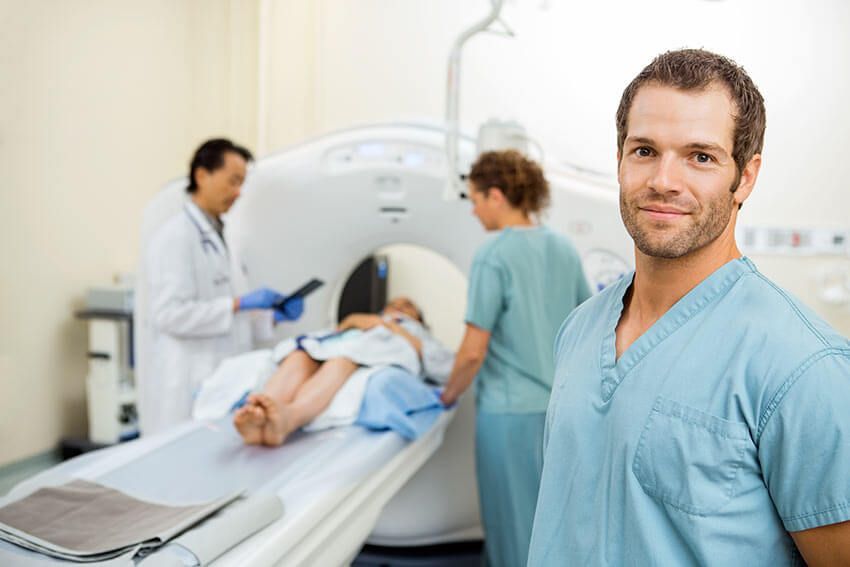
Radiologists Can Help Identify Domestic Violence

Radiologists help doctors diagnose illnesses and evaluate the severity of injuries for millions of patients each year. Results of a new study from Brigham and Women’s Hospital suggest that radiologists could also help clinicians identify cases of domestic violence. To do so, though, the radiologists must be aware of the subtle patterns that can signal intimate partner violence.
Nearly 20 people suffer abuse at the hands of an intimate partner every minute in the United States, according to the National Coalition Against Domestic Violence (NCADV). One in four women has been the victims of severe physical violence by an intimate partner at some point in life; one in seven men has suffered this type of violence over the course of a lifetime.
Proving domestic violence is not always easy. The National Domestic Violence Hotline suggests victims snap pictures of their injuries, household objects broken by the abuser pictures of weapons, and medical reports of the injuries. Unfortunately, only 34 percent of those injured by domestic violence receive medical care for their injuries, and cuts and bruises heal within days or weeks. Without documentation, superficial evidence of the abuse simply fades away and the case may turn into a “he said, she said” situation.
Only about half of all domestic violence incidents are reported to the police. They may fear retaliation, view it as a private matter, or fear the police will not take action.
The victims that do seek medical care often undergo x-rays and other imaging tests to find broken bones or other internal damage. Hospitals and other medical institutions keep records of emergency department visits and radiological findings; these archives may hold the key to establishing patterns of domestic abuse.
Radiologists are in a unique position to identify victims of domestic violence. Radiology images reveal critical clues and provide evidence about a patient’s current injuries, and these images can show patterns of violence.
Radiologists have access to current and previous radiology studies for their patients, and this allows radiologists to play a critical role in identifying victims of intimate partner violence. The information in those radiology images is only evident when radiologists notice the subtle patterns of injury associated with domestic violence, though.
Radiologists on the Front Lines of Diagnosing Intimate Partner Violence
In an interview with MedicalResearch.com, the authors say that the key result of the study is that radiologists are “recognizing new ways to identify victims of intimate partner violence and there might be more information available in the radiology images.”
The research team analyzed information from 185 patients seen in the emergency department at Brigham and Women’s Hospital then referred to the hospital’s domestic violence support program between January 2015 and October 2016. The researchers evaluated information on clinical presentation and history, demographics, and the results of imaging studies performed within the previous five years.
For their research, the authors of the study identified the common patterns of abuse include cuts and bruises, and broken bones in the arms or legs. They noted that abuse victims tended to have fractures of the forearms, wrists and hands, presumably from trying to defend themselves. Facial fractures and pregnancy failures were also common.
The team found that 81.6 percent of those ED patients referred to the program had a prior history of physical, emotional or sexual abuse. Most of the patients in the study had received radiologic examinations in the past, with an average of four radiologic exams per patient.
The researchers found common demographic patterns among victims of domestic violence. Victims of intimate partner violence were more likely to be homeless; sexual assault victims frequently suffer from illicit drug use. They also found that victims of intimate partner violence often come to the emergency department with physical or psychological symptoms not directly related to the abuse. This finding underscores the need for screening to identify these patients.
The team determined that there were certain patterns that could alert radiologists to potential domestic violence and help patients get the help they need.
A real-life case inspired lead author of the study, Bharti Khurana MD, to investigate the radiologist’s role in detecting domestic violence. A young woman came into the Brigham and Women’s Hospital emergency department with a broken nose, also known as a nasal bone fracture. Radiological images showed a new nasal bone fracture on top of an old healed fracture. Dr. Khurana looked through the hospital’s archiving and communication system and found that the patient had also recently suffered a broken wrist. The pattern of recurrent injury made the radiologist suspicious that the patient was suffering from intimate partner violence, a finding that the referring doctor had not initially suspected.
The researchers presented their findings at the annual meeting of the Radiological Society of North America (RSNA).



